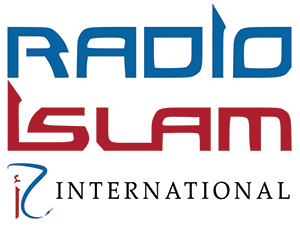How Old Is the Arabic Language?
The Arabic language, as a natural evolution of Semitic languages, did not have a single individual or founder. Instead, Arabic, like other languages, developed organically over time through linguistic evolution and historical processes. It has ancient roots in the Arabian Peninsula and is part of the Semitic language family.
Arabic has a rich history and has undergone various stages of development. The language spoken during the time of Nabi Muhammad (saw) is often referred to as Classical Arabic. The Qur’an, the holy book of Islam, was revealed in this form of Arabic during the 7th century. Classical Arabic is considered a highly refined and standardized linguistic form.
Over the centuries, Arabic has evolved into Modern Standard Arabic, which serves as the formal written language used in literature, media, and formal communication across the Arab world. Additionally, there are various dialects of Arabic spoken in different regions, reflecting the linguistic diversity within the Arab world.
It’s hard to keep track of when and how a language first appeared, but Arabic’s origins are an especially debated topic. However, there are some sources that provide insights on when Arabic first emerged, and scholars agree that Arabic is one of the oldest languages ever discovered and used in the world.
Origin
Arabic is an Afroasiatic language, according to the language family tree. Arabic is the family’s most commonly spoken language. The Afroasiatic language family, which spans the Middle East and most of Africa, consists of six branches and over 300 living languages and dialects, with over 350 million native speakers.
Emergence
The Arabic language as we know it is thought to have originated in the sixth century, but older variations of the language existed, including the Safaitic dialect, an old Arabic dialect used by pre-Islamic nomadic inhabitants of the Syro-Arabian desert. However, according to various sources, the language’s first appearances date back to the second millennium BC. The Arabic of the Maghreb (North Africa), Egyptian Arabic (Egypt and Sudan), Levantine Arabic (Lebanon, Syria, Jordan, and Palestine), and Iraqi/Gulf Arabic are the four main regional dialects spoken in the Arab world today, with dialectic differences in different countries. Modern Standard Arabic differs from both Quranic and Classical Arabic. It has undergone a period of “Europeanisation” in the 19th century which has modified parts of the language and has had a major impact on grammar.
How Old is The Arabic Alphabet?
First of all, the Arabic alphabet is incorrectly labeled as an “alphabet,” when, in fact, it is an “abjad.” An abjad is a system that makes every letter in the language stands for a consonant rather than a vowel, requiring the language’s user to include the vowels using vowel markers.
The Arabic alphabet was established in the fourth century CE, but the oldest extant Arabic writing is a 512 CE trilingual inscription (Greek-Syriac-Arabic).
Some argue that the Arabic script developed in the North, in Al Hirah (fourth to seventh-century Mesopotamia), while others argue that it originated in the South, in Himyar (110 BC to AD 525).
The Nabatean Aramaic script is the ancestor of the North Arabic script, the oldest extant copies of which date from the 4th century B.C. However, since the Aramaic script represented fewer consonants than the required number for Arabic, the use of certain shapes was extended by the use of dots put on the letters.
Arabic letters are distinguished by their use of dots. Often the only way to distinguish such letters is to add a dot above or below the letter. The Arabic letters weren’t dotted until several years after the Quran was transcribed into a bound book. To unify and standardize it, diacritics, as well as various tone and pronunciation grids, were added.
The Kufic, named after the town of Kufah in Mesopotamia, which hosted a popular Muslim academy, and the Naskh, or Mecca-Medina script, were the two main styles of alphabet Arabic writing that evolved rather early in the Muslim era.
In summary, the Arabic language did not have a single founder but has evolved over thousands of years through natural linguistic processes, influenced by historical, cultural, and religious factors. The development of Arabic is deeply intertwined with the cultural and historical context of the Arabian Peninsula and the broader Arab world.





0 Comments